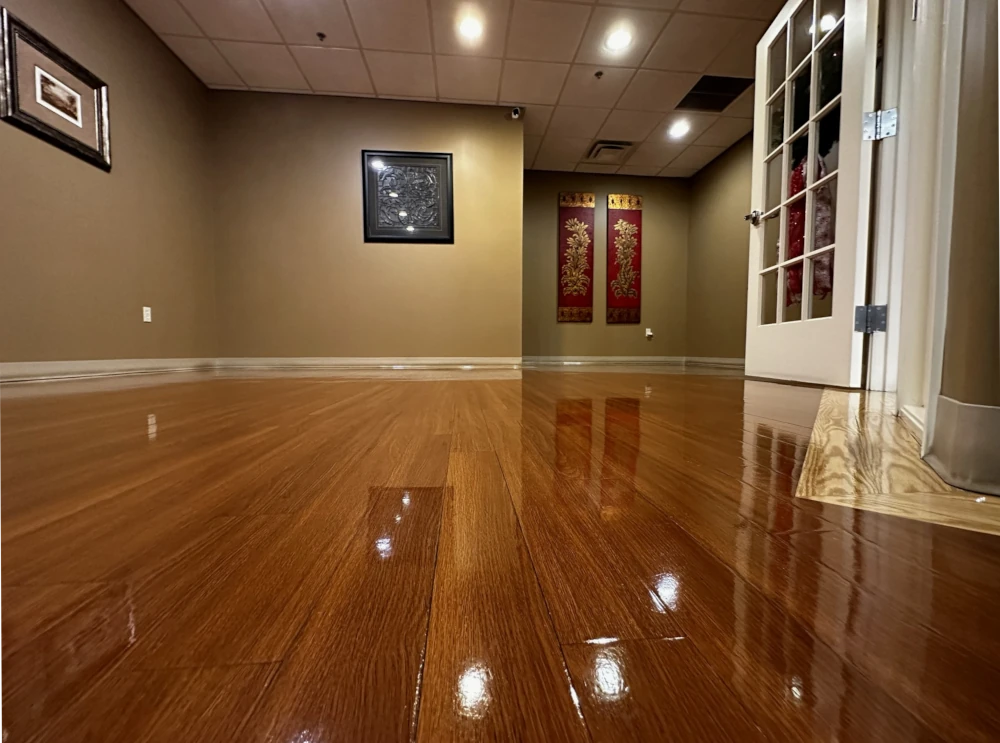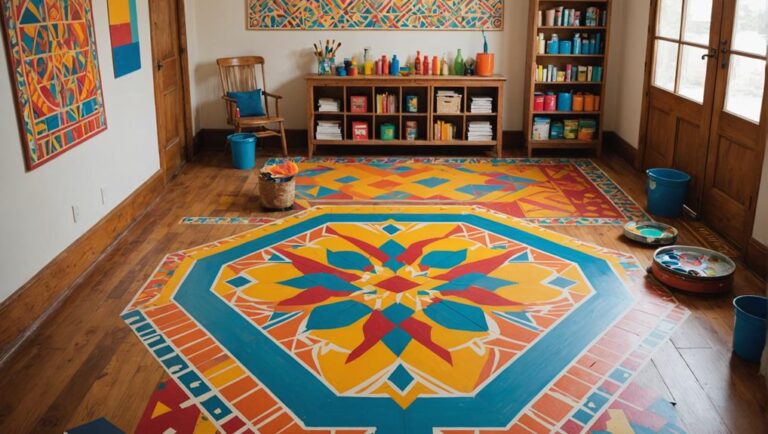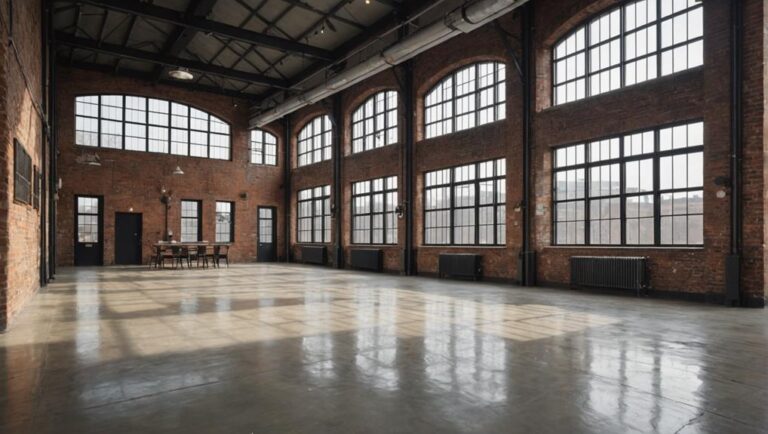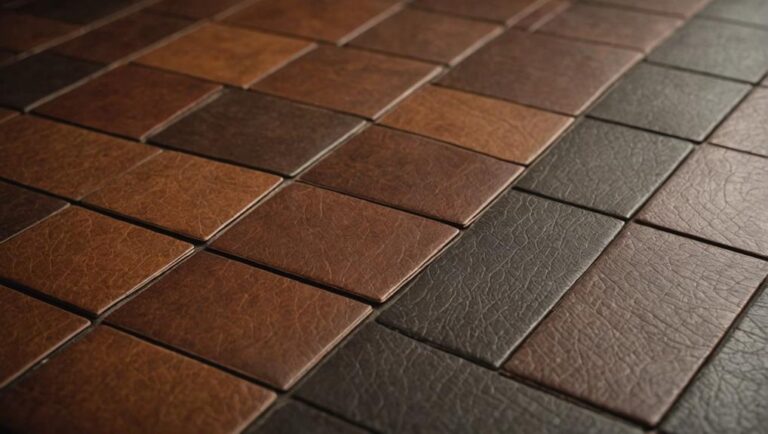Burnishing Floors
When it comes to maintaining the appearance of your floors, burnishing is a crucial process that you should consider. Burnishing is a method of polishing hard floors using a specialized machine called a burnisher. This process helps to restore the shine and smoothness of the floor surface, creating a clean and professional look.
Burnishing is typically done on floors that are made of hard materials like concrete, marble, or terrazzo. The burnisher machine is equipped with a high-speed pad or brush that spins rapidly, generating heat and friction on the floor surface. This process, combined with the use of a burnishing compound, removes scuff marks, scratches, and other imperfections, leaving behind a glossy finish.
Benefits of Burnishing Floors
There are several benefits to burnishing floors that make it a popular choice among facility managers and homeowners alike:
- Enhanced Appearance: Burnishing floors can transform dull and worn-out surfaces into beautiful, glossy floors. The process removes dirt, grime, and imperfections, leaving behind a smooth and shiny finish that enhances the overall appearance of the space.
- Increased Durability: Burnishing creates a protective layer on the floor surface, making it more resistant to scratches and wear. This helps to extend the lifespan of the floor and reduce the need for frequent maintenance and repairs.
- Improved Safety: Burnishing floors can improve safety by reducing the risk of slips and falls. The glossy finish created by the process makes the floor surface less slippery, providing a safer environment for both employees and customers.
- Cost-Effective: Burnishing is a cost-effective alternative to other floor restoration methods. It requires fewer chemicals and less time compared to stripping and waxing, resulting in lower maintenance costs in the long run.
- Eco-Friendly: Burnishing floors is an environmentally-friendly option as it minimizes the use of chemicals and water. The process utilizes a burnishing compound that is non-toxic and does not release harmful fumes, making it a sustainable choice for floor maintenance.
Overall, burnishing is an effective and efficient method for restoring and maintaining the appearance of hard floors. It offers numerous benefits, including enhanced appearance, increased durability, improved safety, cost-effectiveness, and eco-friendliness. By incorporating burnishing into your floor maintenance routine, you can ensure that your floors always look their best and create a positive impression on visitors and customers.
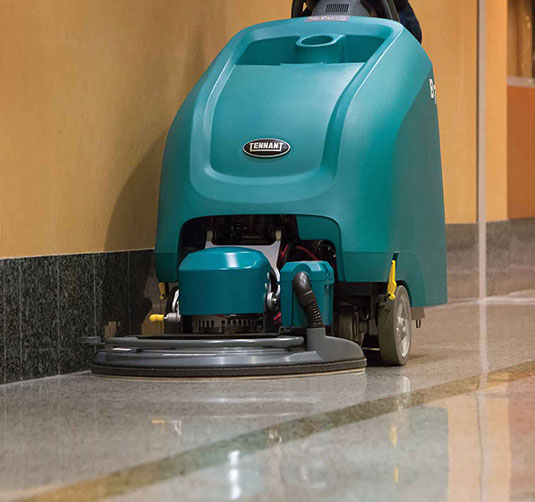
Buffing Floors
When it comes to floor maintenance, buffing is another important process to consider. Buffing is a method that involves mechanically polishing the floor surface using a high-speed rotary machine equipped with a soft pad or brush. This process helps to remove minor scuffs, scratches, and imperfections, resulting in a smooth and shiny finish.
Buffing is typically done on a variety of hard floor surfaces, including vinyl, wood, and laminate. The rotary machine’s high-speed rotation generates heat and friction, which activates the buffing pad or brush to effectively remove surface blemishes and restore the floor’s luster.
Advantages of Buffing Floors
Buffing floors offers several advantages that make it a popular choice for maintaining floor appearance:
- Enhanced Shine: Buffing effectively restores the natural shine of hard floor surfaces. The process eliminates dullness and leaves behind a glossy finish, enhancing the overall aesthetic appeal of the space.
- Improves Durability: Buffing creates a protective layer on the floor surface, making it more resistant to wear and tear. This helps to prolong the lifespan of the flooring and reduces the need for frequent repairs or replacements.
- Efficient Stain Removal: Buffing can effectively remove stains and marks from the floor surface. The mechanical action of the buffer, combined with the appropriate cleaning solution, helps to break down and lift stubborn stains, leaving the floor looking clean and spotless.
- Cost-Effective Maintenance: Buffing is a cost-effective maintenance option compared to more extensive floor restoration methods. It requires fewer chemicals and less time, resulting in reduced labor and maintenance costs.
- Improved Indoor Air Quality: Buffing removes accumulated dirt, dust, and allergens from the floor surface, contributing to improved indoor air quality. This is particularly beneficial for individuals with allergies or respiratory conditions.
- Quick Drying Time: Buffing allows for a quick drying time, enabling the floor to be ready for use soon after the process is completed. This minimizes downtime and disruption to daily operations in commercial spaces.
In conclusion, buffing floors is an effective and efficient method for maintaining and restoring the appearance of hard floor surfaces. It offers advantages such as enhanced shine, improved durability, efficient stain removal, cost-effectiveness, improved indoor air quality, and quick drying time. By incorporating buffing into your floor maintenance routine, you can ensure that your floors remain clean, glossy, and visually appealing.

Key Differences between Burnishing and Buffing
When it comes to floor maintenance, two commonly used methods are burnishing and buffing. While they both aim to restore the shine and appearance of hard floor surfaces, there are some key differences between the two processes. This article will explain the process of burnishing and the process of buffing, highlighting their distinguishing factors.
Process explanation of burnishing
Burnishing is an advanced floor maintenance technique that involves using a high-speed burnisher machine equipped with a burnishing pad. The burnishing pad rotates at a much higher speed than a regular buffer, typically ranging from 1,500 to 3,000 RPM (rotations per minute). This high-speed rotation generates heat and friction, which helps to melt and redistribute the floor finish, creating a glossy and reflective surface.
The burnishing process typically follows a thorough cleaning and stripping of the floor, removing any dirt, stains, or old floor finish. Once the floor is clean and dry, a burnishing pad is attached to the burnisher machine, and the operator moves the machine in a slow, overlapping motion. The burnishing pad polishes the floor surface and leaves behind a high-gloss shine.
Process explanation of buffing
Buffing, on the other hand, is a less aggressive floor maintenance technique that uses a high-speed rotary machine equipped with a soft pad or brush. The purpose of buffing is to remove minor scuffs, scratches, and imperfections from the floor surface, resulting in a smooth and shiny finish.
Unlike burnishing, the buffing process does not involve melting or redistributing the floor finish. Instead, it focuses on mechanically polishing the top layer of the floor surface. The high-speed rotation of the buffing machine generates heat and friction, activating the soft pad or brush to effectively remove surface blemishes and restore the floor’s luster.
Buffing is typically performed on a variety of hard floor surfaces, including vinyl, wood, and laminate. It is often used as a regular maintenance method to maintain the appearance of the floor between more thorough cleaning and refinishing processes.
In summary, burnishing and buffing are two distinct floor maintenance methods. Burnishing involves using a high-speed burnisher machine with a burnishing pad to melt and redistribute the floor finish, creating a glossy and reflective surface. On the other hand, buffing uses a high-speed rotary machine with a soft pad or brush to mechanically polish the floor surface, removing minor imperfections and restoring the shine. The choice between burnishing and buffing depends on the specific needs and condition of the floor surface, as well as the desired level of shine and gloss.
Factors to Consider
When it comes to maintaining the appearance of hard floor surfaces, burnishing and buffing are two commonly used methods. Understanding the differences between the two can help you determine which method is suitable for your specific floor type and maintenance needs. Here are some important factors to consider:
Floor Types Suitable for Burnishing
Burnishing is an advanced floor maintenance technique that is most suitable for floors with a high-gloss finish, such as vinyl, terrazzo, and certain types of coated concrete floors. These floor types have a protective layer of finish that can be melted and redistributed to create a glossy and reflective surface.
The high-speed rotation of the burnisher machine, typically ranging from 1,500 to 3,000 RPM, generates heat and friction that activates the burnishing pad. This pad helps to melt and redistribute the floor finish, resulting in a smooth and shiny appearance. Burnishing is an effective method for removing minor scratches and imperfections from these types of floors.
Floor Types Suitable for Buffing
Buffing, on the other hand, is a less aggressive floor maintenance technique that is suitable for a wider range of floor types. It can be used on vinyl, wood, laminate, and other hard floor surfaces. Buffing is particularly effective for surfaces with a low-gloss or matte finish.
The high-speed rotation of the buffing machine, similar to the burnishing machine, generates heat and friction that activates the soft pad or brush. This pad or brush helps to mechanically polish the top layer of the floor surface, removing minor scuffs, scratches, and imperfections. Buffing can restore the shine and smoothness of these floor types without the need to melt and redistribute a floor finish.
It is important to note that some floor types may not be suitable for burnishing or buffing. For example, unsealed or unfinished wood floors, natural stone floors, and certain types of linoleum floors may require alternative maintenance methods.
In summary, when deciding between burnishing and buffing, it is crucial to consider the type of floor you have. Burnishing is best suited for floors with a high-gloss finish, such as vinyl and terrazzo, while buffing can be used on a wider range of floor types, including wood and laminate. Understanding the specific needs and condition of your floor surface will help you choose the most appropriate method to achieve the desired level of shine and gloss.

Choosing the Right Method
When it comes to maintaining the appearance of hard floor surfaces, burnishing and buffing are two commonly used methods. Understanding the differences between the two can help you determine which method is suitable for your specific floor type and maintenance needs. Here are some important factors to consider:
Comparison of results between burnishing and buffing
Burnishing is an advanced floor maintenance technique that is most suitable for floors with a high-gloss finish, such as vinyl, terrazzo, and certain types of coated concrete floors. The high-speed rotation of the burnisher machine generates heat and friction that activates the burnishing pad. This pad helps to melt and redistribute the floor finish, resulting in a smooth and shiny appearance. Burnishing is an effective method for removing minor scratches and imperfections from these types of floors.
On the other hand, buffing is a less aggressive floor maintenance technique that is suitable for a wider range of floor types. It can be used on vinyl, wood, laminate, and other hard floor surfaces. The high-speed rotation of the buffing machine generates heat and friction that activates the soft pad or brush. This pad or brush helps to mechanically polish the top layer of the floor surface, removing minor scuffs, scratches, and imperfections. Buffing can restore the shine and smoothness of these floor types without the need to melt and redistribute a floor finish.
Determining the best method for your floors
When deciding between burnishing and buffing, it is crucial to consider the type of floor you have. If your floor has a high-gloss finish, such as vinyl or terrazzo, burnishing is the most suitable method. By utilizing the heat and friction generated by the burnisher machine, burnishing can effectively remove minor scratches and imperfections, resulting in a smooth and glossy appearance.
On the other hand, if your floor has a low-gloss or matte finish, buffing is the recommended method. Buffing can be used on a wider range of floor types, including wood and laminate. It mechanically polishes the top layer of the floor surface, restoring the shine and smoothness without the need to melt and redistribute a floor finish.
It is important to note that some floor types may not be suitable for burnishing or buffing. Unsealed or unfinished wood floors, natural stone floors, and certain types of linoleum floors may require alternative maintenance methods.
To determine the best method for your floors, consider the specific needs and condition of your floor surface. If you are unsure, it is recommended to consult with a professional floor maintenance service provider who can assess your floors and recommend the most appropriate method to achieve the desired level of shine and gloss.
Choosing the right method between burnishing and buffing depends on the type of floor you have and the level of gloss you desire. Burnishing is best suited for high-gloss floors, while buffing is suitable for a wider range of floor types with a low-gloss or matte finish. Consulting with professionals can help you make an informed decision and ensure the optimal maintenance of your hard floor surfaces.
Conclusion
In conclusion, both burnishing and buffing are valuable methods for maintaining the appearance of hard floor surfaces. However, they differ in terms of the type of floors they are suitable for and the results they can achieve. Here are the key points to consider when choosing between burnishing and buffing for your floor maintenance needs.
Pros and Cons of Burnishing and Buffing
Burnishing:
- Pros: Suitable for high-gloss finish floors like vinyl, terrazzo, and coated concrete. It removes minor scratches and imperfections, resulting in a smooth and shiny appearance.
- Cons: Not suitable for low-gloss or matte finish floors. It requires the use of a burnisher machine and the need to melt and redistribute a floor finish.
Buffing:
- Pros: Suitable for a wider range of floor types, including vinyl, wood, and laminate. It mechanically polishes the top layer of the floor surface, restoring shine and smoothness without the need for a floor finish.
- Cons: Less effective for high-gloss finish floors. It may not remove deep scratches or imperfections.
Choosing the Appropriate Method for Your Specific Needs
To determine the best method for your floors, consider the following factors:
- Floor Type: If your floor has a high-gloss finish, such as vinyl or terrazzo, burnishing is the most suitable method. For low-gloss or matte finish floors, buffing is recommended.
- Desired Results: If you want a smooth and shiny appearance, burnishing is the ideal choice. If you simply want to restore shine and smoothness, buffing is sufficient.
- Maintenance Needs: Consider the frequency and level of maintenance required. Burnishing may require more effort as it involves the use of a burnisher machine and floor finish redistribution.
It is important to note that certain floor types, such as unsealed or unfinished wood floors, natural stone floors, and certain linoleum floors, may require alternative maintenance methods. Consult with a professional floor maintenance service provider to assess your floors and recommend the most appropriate method for optimal results.
In summary, understanding the differences between burnishing and buffing is crucial in choosing the appropriate method for your specific needs. Consider the type of floor you have, the desired results, and the level of maintenance required. By making an informed decision, you can effectively maintain the appearance of your hard floor surfaces and achieve the desired level of shine and gloss.

